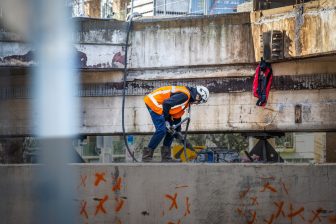EU signs Transport Protocol Alpine Convention
IP/06/1753
Brussels, Belgium – The European Union 2006-12-12 formally signed the Protocol on the Implementation of the Alpine Convention in the field of Transport. This Protocol is mainly aimed to achieving sustainable transport in the Alpine Region whilst ensuring a high level of safety and environmental protection. The document was signed by Ms Susanna Huovinen, Minister of Transport and Communications representing the Finnish Presidency, and Mr Jacques Barrot, European Commission Vice-President, representing the European Community.
Welcoming the evolution of this file, Vice-President Jacques Barrot, Commissioner for Transport, declared: “We are very pleased to sign this Transport Protocol on behalf of the Community. This is an important step for the promotion of regional cooperation as well as a strong signal on the importance of the Alps as a sensitive region in the heart of the European Union. "
On 14 May 1991 the Commission was authorised by the Council to participate, on behalf of the Community, in the negotiations on the Alpine Convention and the protocols thereto, in consultation with the Member States. This included a Protocol on the Implementation of the Alpine Convention in the field of Transport.
The Protocol was open for signature of the contracting parties (the Federal Republic of Germany, the French Republic, the Italian Republic, the Principality of Liechtenstein, the Principality of Monaco, the Republic of Austria, the Swiss Confederation, the Republic of Slovenia, and the European Community) on the occasion of the Ministerial meeting of the Alpine Convention, which took place in Lucerne on 30 and 31 October 2000.
Thanks to the efforts of the Austrian and Finnish Presidency, the signature of this protocol was adopted by the Transport Council of 12 October 2006 after it was proposed for the first time to the Council in 2001 without success. Its adoption was also accompanied by a joint declaration of the Council and the Commission concerning the interpretation of the Transport Protocol.
The main objectives of the Transport Protocol are to reduce the volume of and dangers posed by intra-Alpine and trans-Alpine traffic, in particular by transferring more traffic, especially freight traffic, to the railways, mainly by providing appropriate infrastructure and incentives complying with market principles; to ensure intra-Alpine and trans-Alpine traffic at economically bearable costs by increasing the effectiveness of the transport systems and promoting the most environmentally-friendly and economic modes of transport; and to ensure fair competition between the different modes of transport.
U las zojuist één van de gratis premium artikelen
Onbeperkt lezen? Profiteer nu van de introductieaanbieding voor € 10,- per maand.
Bent u al abonnee?



